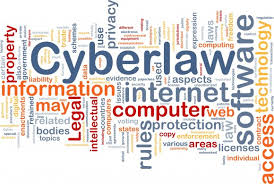In this article, I will talk about the laws that govern cybercrimes and introduce you to cyberlaws across the world and India in brief. Cyber law, also known as Internet or digital or Information Technology law, pertains to the legal domain that addresses the crimes done using the networks and various electronic components. Here networks include Internet, Intranet, Telecommunication and other networks, and electronic components include all devices like computing devices, phones, sensors, CCTV, recording devices etc. These devices and networks can be used as a target or as a weapon or as an accessory to a crime. Cyberlaws covers a large range of issues, including online communication, e-commerce, digital privacy, and the prevention and prosecution of cybercrimes. Cyberlaws provides a framework for protecting individuals and organizations from cyber threats, ensuring the privacy and security of digital transactions, and establishing guidelines for safe, ethical and legal conduct in cyberspace. Cyber Laws also yields legal recognition to electronic documents, Intellectual property, data protection and privacy, and a structure to support e-filing and e-commerce transaction, with punishment ranging from fines to imprisonment or both.
First cyberlaw in this world was enacted in USA in 1986 in the form of Computer Fraud and Abuse Act. In India, first cyberlaw came into force on 17th October 2000 in the form of Information Technology Act, 2000 also known as IT Act. Objectives of this Act includes “to provide legal recognition for transactions carried out by means of electronic data interchange and electronic methods of communication and storage of information, to facilitate e-commerce, digital & electronic signature, electronic filing of documents with the Government agencies and further to amend the Indian Penal Code, the Indian Evidence Act, 1872, the Banker’s Book Evidence Act, 1891 and the Reserve Bank of India Act, 1934 and for matters connected therewith or incidental thereto”. This Act was modified in December, 2008 to make the law technologically neutral, improved data protection features, intermediate and corporate responsibilities were defined and many more cyber offences were brought in the purview of the IT Act. There is a new Information Technology Act, named as the Digital India Bill that is in the works and may be placed before parliament in 2024. It is expected to introduce new criminal offences, propose a regulator for the digital space and prescribe governing provisions for emerging technologies like the artificial intelligence, metaverse and blockchain.
The Indian Penal Code(IPC), the official criminal code of India, was drafted way back in 1860 and is used along with IT Act to prosecute cyber criminals. Similarly Indian Evidence Act, 1872, is a crucial piece of legislation that regulates the admissibility, relevancy, and trustworthiness of evidence submitted in Indian courts. As part of enactment of IT Act 2000, IPC and Indian Evidence Act was modified to support crime committed in electronic form, electronic & digital signatures and admissibility of electronic records as evidence. Police use IPC sections along with the sections of IT Act against the crime committed often as most of the sections of IT Act are bailable and non-cognizable and IPC section carries harsher punishment and fines compared to IT Act. Though in the case of Sharat Babu Digumarti v/s Government of NCT of Delhi(2016 SCC OnLine SC 1464, decided on 14.12.2016), Supreme Court has ruled that if an offence involves an electronic record, the IT Act prevails over the sections of IPC. IPC is being replaced by the Bharatiya Nyaya Sanhita (BNS), 2023 from July 1st 2024 officially as India’s primary criminal code. I will write in detail about the changes introduced in this new law and it’s impact on the common people and IT Act in another post.
Introduction to Cyberlaws

